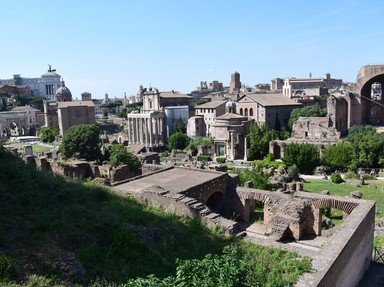Quiz Answer Key and Fun Facts
1. This ancient empire reached the fullest extent of its development under the reign of Assurbanipal. It stretched from west of the Nile Delta to the Caucasus Mountains in the east, and included the ancient "Land Between the Rivers". Which empire was formed by these Mesopotamians, known for roasting and skinning their enemies alive?
2. Cyrus the Great was the founder of this empire, the largest the ancient world had seen up to that time. Eventually it stretched from approximately Thrace and modern day Tunisia in the west to the Indus River in the east. In the north, it nearly extended to the Caspian Sea, and to the south it reached the upper edge of the Arabian Peninsula. Whose expansion eventually brought them into conflict with the Greeks at the Battle of Marathon?
3. Begun by Philip II, this empire eventually included Greece to the west, and eastward all the way to the Indus River. With the capital at Pela, the king also ruled Egypt, Mesopotamia, and eventually Persia. It covered 2.01 million square miles at its peak of power.
4. This empire was ultimately so large, that the people dared to call the Mediterranean "our sea". In the north it stretched to the border of Scotland, to the south it included North Africa, and to the east it went as far as Palestine.
5. This empire existed in the thirteenth and fourteenth centuries, and was the largest contiguous land empire the world has ever known. Beginning in Central Asia, it stretched from eastern Europe to the Sea of Japan, and in the west to parts of the Middle East, covering approximately 9.3 million square miles.
6. This empire essentially was the eastern half of the Roman empire. With its capital at Constantinople, it continued for nearly a thousand more years after the fall of the empire in the west.
7. This empire was founded by Osman in the late thirteenth century. Reaching the peak of its power c. 1590, it did continue to exist until 1918, in spite of its later nickname of "The sick man of Europe".
8. The founder of this empire, Otto I, was crowned in 962, and the last emperor, Francis II, abdicated during the Napoleonic Wars in 1806. Located in Central Europe, at its peak of power it included the Kingdoms of Germany, Bohemia, much of northern Italy, and most of Burgundy.
9. This empire was the third largest in world history. It was established in 1721, and finally met its end in 1917. At one time it stretched from Eastern Europe, across parts of Asia, and into North America.
10. The "sun never set" on this empire, the largest the world has ever known. At the peak of its power, the ruler of this empire ruled 20% of the world's population on 22% of the world land area.
Source: Author
ponycargirl
This quiz was reviewed by FunTrivia editor
bloomsby before going online.
Any errors found in FunTrivia content are routinely corrected through our feedback system.


